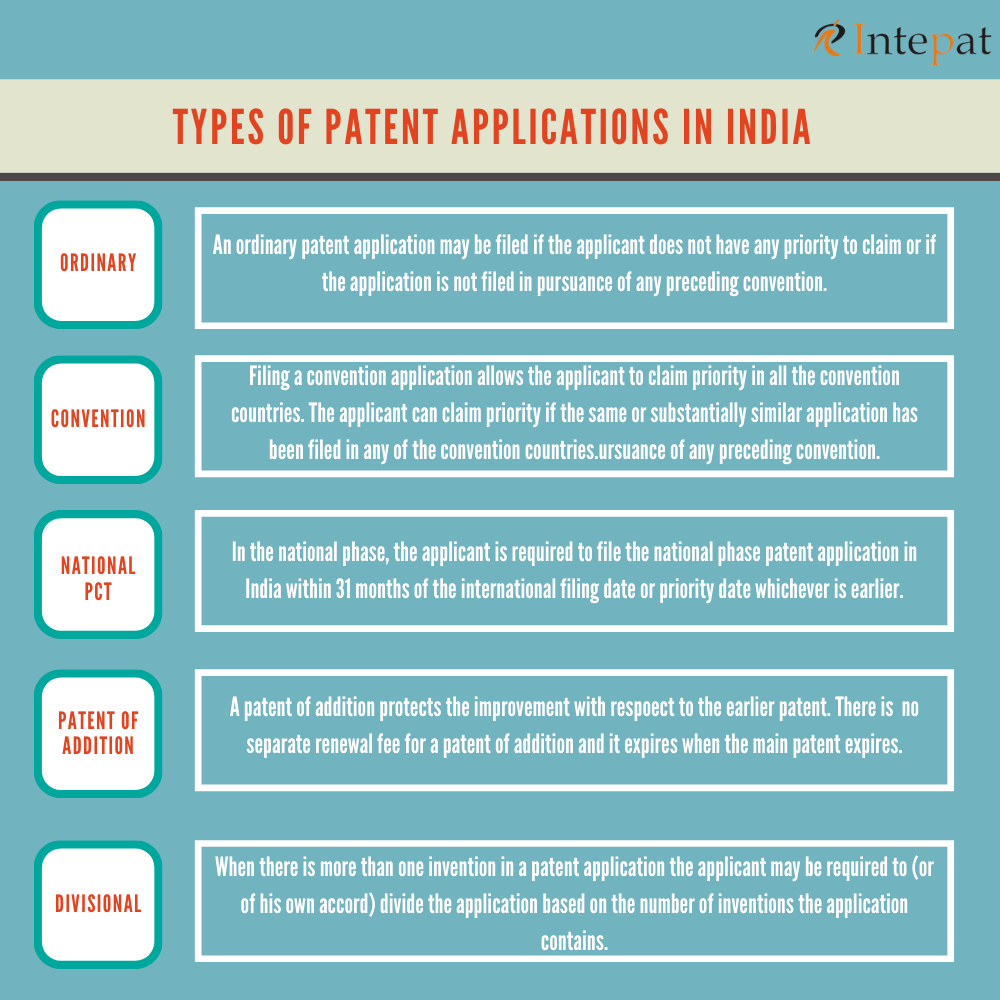Types of Patent Application
Before filing a “patent application,” the applicant must be sure about the kind of application that they want to file. On the whole, there are major five different types of patent applications, each of which serves another purpose. The applicant must, therefore, choose the type of patent application that suits their requirements.
The following paragraphs will fully reveal the different kinds of patent applications and types of patents in India, and the purpose that they serve:
1. Ordinary application
An ordinary application may be filed if the applicant does not have any priority to claim or if the application is not filed in pursuance of any preceding convention application.
2. Convention patent application
Filing a convention application allows the applicant to claim priority in all the convention countries. The applicant can claim priority if the same or substantially similar application has been filed in any convention country. The time limit for claiming priority is 12 months from the date on which the first convention application was filed in a convention country.
3. National Phase PCT Application
In the national phase, the applicant must file the national phase patent application in India within 31 months of the international filing date or priority date, whichever is earlier. The national phase of a PCT application resembles a national filing in a respective country. The decision to grant patent protection in a particular country ultimately rests on the Patent Office of that country. However, filing the PCT patent application is much simpler than filing normal national patent applications since most of the formal requirements are resolved in the international phase. Also, the national examiners most often follow the search report conducted in the international stage.
4. Patent of Addition
Suppose you have already filed for a patent and made a slight improvement in the invention. You may not be able to file a new patent application, as it would not satisfy the requirement for an inventive step. That is when a patent of addition may be filed. A patent of addition protects the improvement. There is no separate renewal fee for a patent of addition that expires when the main patent expires.
5. Divisional Application
When there is more than one invention in a patent application, the applicant may be required to (or of his own accord) divide the application based on the number of inventions the application contains. The applicant may a divisional application at any time before the grant of a patent. The priority date of the divided applications is the same as the parent patent application.
Therefore, the applicant can choose from any of the preceding types of applications depending on the Applicant’s requirements.
[cherry_button text=”Need Help? Connect with us” url=”https://www.intepat.com/contact-us/” style=”success” centered=”yes” fluid_position=”right” icon_position=”top” bg_color=”#ea9525″ min_width=”33″ target=”_blank”]




